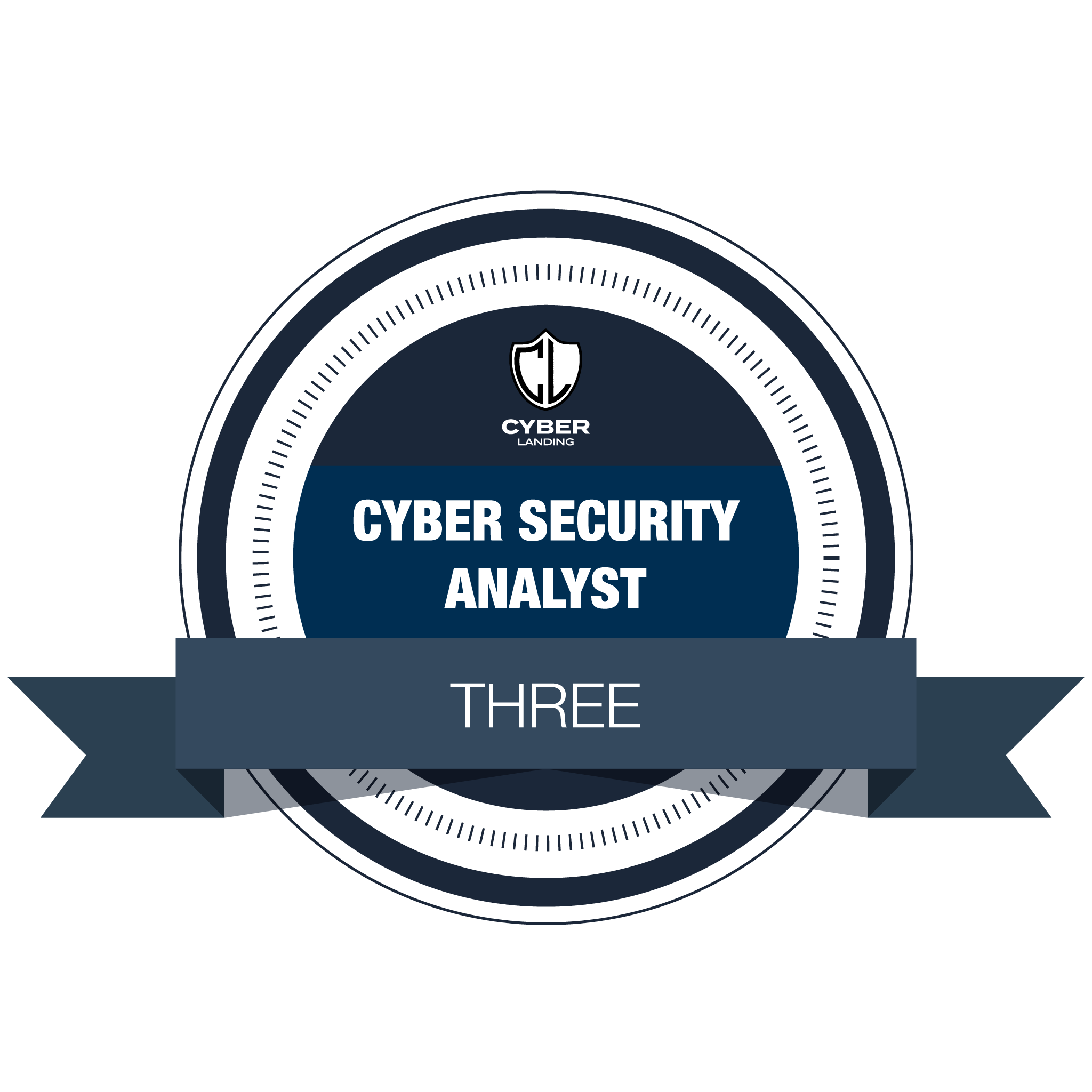Cyber Security Analyst Three Certificate
How to beat the competition and get the job?
Description
 Cyber Security Analyst Cert Three is truly a unique experience and unlike any other SOC training program you’ll find anywhere.
Cyber Security Analyst Cert Three is truly a unique experience and unlike any other SOC training program you’ll find anywhere.
To understand why and how we designed this Certificate you need to put yourself in the shoes of a SOC Team.
Ultimately, it’s the SOC Team’s responsibility to protect the company from cyber threats. This can be a daunting task given the ever-changing world of cybercrime they face, daily.
SOC Teams are under pressure and need the best people they can get to help them. The more skills and level of experience you can bring to the table the more inclined they will be to welcome you aboard.
The problem is if you haven’t worked in a SOC before how can you assure them of your ability to help? It’s the chicken and egg dilemma.
This is what Cyber Security Analyst Cert Three is all about.
The team at SOCdrills include some of the World’s most experienced SOC architects and trainers. Over the past 10-years they have travelled non-stop across the globe advising, designing, building and training world-class SOC teams. Today, many of the team are still working at the highest level in some of the World’s best SOC teams.
The team at SOCdrills knows exactly what SOC teams are looking for.
To this end we’ve delivered a program that will give you the direct experience, on one of the best cyber ranges you’ll experience to help you get the job. Make no mistake. Not all cyber ranges are equal.
In the competitive world of getting into the SOC team of your dreams you need an edge. Mastering these SOC Drills will give you a point of difference and help give confidence to get you on board.
Course Outline
SOC Analyst III puts 8 of the most in demand and cutting edge SOC Drills in your hands, they include:
SOC Drill 1. APT (Advanced Persistent Threats)
SOC Drill 2. APT Attack
SOC Drill 3. APT Compromise
SOC Drill 4. APT Compromise 1.
SOC Drill 5. APT Compromise 2.
SOC Drill 6. APT Compromise 3.
SOC Drill 7. Critical APT Compromise 1.
SOC Drill 8. Critical APT Compromise 2.
Prerequisites
-
Completed and passed Cyber Security Analyst Two Certification
-
CCNA or equivalent
-
Relevant IT based University Degree or Vocational Diploma
-
IT industry experience
Certification

After you finish the Cyber Security Analyst Three Certificate with a score of at least 80%, you will get a Cyber Security Analyst Three Certificate in your email and entitled to other membership privileges and discounts.
However, should you wish to gain an entry level position in cyber security it is highly recommended you complete the Mentoring Program.
SOC Path
The SOC is Evolving
Choose the Path that’s Right for You
-
Self-managed SOC
This model has an on-premises facility with in-house staff.
-
Distributed SOC
Or a co-managed SOC, this model has semi-dedicated full-time or part-time team members who are hired in-house to work alongside a third-party managed security service provider (MSSP).
-
Managed SOC
This model has MSSPs providing all SOC services to an enterprise. Managed detection and response (MDR) partners are another form of a managed SOC.
-
Command SOC
This model provides threat intelligence insights and security expertise to other, typically dedicated, security operations centers. A command SOC is not involved in the actual security operations or processes, just the intelligence side.
-
Fusion Centre
This model oversees any security-focused facility or initiative, including other types of SOCs or IT departments. Fusion centres are considered advanced SOCs and work with other enterprise teams, such as IT operations, DevOps and product development.
-
Multifunction SOC
This model has a dedicated facility and in-house staff, but its roles and responsibilities extend to other critical areas of IT management, such as the network operations centres (NOCs).
-
Virtual SOC
This model does not have a dedicated on-premises facility. A virtual SOC can be enterprise-run or fully managed. An enterprise-run SOC is generally staffed by in-house employees or a mix of in-house, on-demand and cloud-provided employees. A fully managed virtual SOC, also known as an outsourced SOC or SOC as a service (SOCaaS), has no in-house staff.
-
SOCaaS
This subscription-based or software-based model outsources some or all SOC functions to a cloud provider.